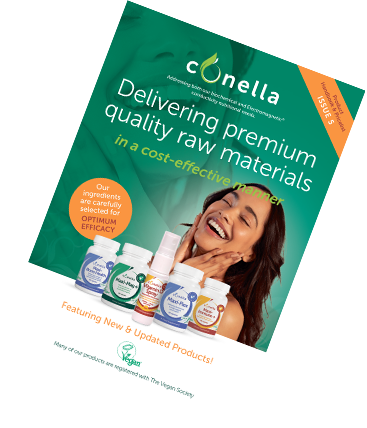The long, dark days of winter are in your rear-view mirror, and the temperature is rising. You are probably starting to shed clothing layers and get more active. Once the Spring Equinox is done (20th March) and the days get longer, we generally experience improved mood and energy levels.
Getting more fresh air will certainly perk you up, and it’s traditionally a time to declutter your home as part of good mental health support and to do a thorough clean to eliminate dust, bacteria and other allergens from floors and other surfaces.
This is not a nutritional topic that gets much exposure. However, there are many reasons to improve your thyroid function. Especially by increasing your magnesium intake from careful food and supplement choices.
This is why we have drawn together a range of valuable insights on the role of your thyroid gland, and how nutrition supports it.
You would especially benefit from reading this article if you are keen to improve your weight management, energy levels, and sleep patterns, for example.
What does your thyroid gland do?
Ageing, illness, energy, nutrition, and light; a guide to protecting mitochondrial function
Have you ever pondered the complexities of how our bodies convert the sun’s rays into vitamin D? Or indeed, the general interaction between our health, Circadian rhythms, and sufficient exposure to light?
Also, why do our energy levels – and ability to combat illnesses - decline as we get older?
This is an important and fascinating topic, tied up in our mitochondrial function. It can also be a vital piece of knowledge that can help you to understand how detoxification and good nutrition can protect your health at a cellular level.
Many nutritional courses are slowly moving away from the key principles of naturopathy. Rather suggesting that nutrition is a science, (a so-called evidence-based nutrition, without debating what should be accepted as evidence), rather than an art using traditional techniques that are designed to optimise detoxification, enemas, clysmatics, hot and cold showering, castor oil packing to name but a few. This is being done in a bid to obtain accreditation and recognition from more mainstream organisations and is fuelled by their reluctance to make any controversial statements that could see their sites and social media comments censored or de-platformed.
The age-old struggle to get a good night’s sleep affects everyone at some point in their lives. However, for some, it’s a constant problem that can seriously affect their health.
Whether you have trouble going to sleep, or difficulties in staying asleep, too little slumber can impact mood and concentration, as well as your body’s ability to carry out its essential nightly growth, maintenance, and repair functions.
Also, the human ageing process can further interfere with our ability to pass through a full REM cycle and get the recommended six to eight hours of sleep each night.
Why does winter create so many health challenges, from grandparents right through to your little ones? Firstly, nothing spreads infections like central heating and limited ventilation, especially in schools and workplaces! Another challenge is that sunshine is in such short supply, and we tend to have reduced amounts of fresh air and outdoor exercise in winter.
The health properties of the various red, blue and purple berries have been understood for many years. Including the fact that these foodstuffs are rich in antioxidants and offer an important immune health boost.
However, there is a growing appreciation that berries containing a high source of anthocyanosides (blue/red pigments) can combat some eye conditions. Including fatigue and dry eye caused by too much ‘screen time’ or certain health conditions.
When people strongly believe something to be right, they often refer to ‘knowing its right in their bones’, yet how often do we stop to consider what’s really right for our bones and our bone health, often ignoring their needs until problems occur, usually later in life, in our hips knees etc.
Poor bone health leads to osteoporosis, or ‘brittle bones’, where our bones become less dense and break easily. The UK has the second highest rates of osteoporosis in the world, next to the US, with more than 3 million people being affected (NHS, 2019).
Hip fractures are the most serious consequences of brittle bones, leading to a reduction in survival of 10-20% in women and 30% in men. Up to 20% of women with hip fractures die within a year, and a further 25% require long-term care (Shepherd, 2004; Pizzorno & Murray, 2007).
So, taking care of our bone health throughout our lifetime is vital to reduce our risk of becoming part of these concerning statistics.
According to WHO, 17.9 million people die of CVD every year. we ask could a vitamin associated primarily with bone resilience and immunity offer an important way of protecting cardiovascular health? This article explains that topic, and the wider advantages of vitamin
According to WHO, 17.9 million people die of CVD every year. (To put this in context, there has been 5.3 million COVID deaths since the start of the pandemic).
Could a vitamin associated primarily with bone resilience and immunity offer an important way of protecting cardiovascular health? This article explains that topic, and the wider advantages of vitamin D.










